Meeting Reducing Manual Strain In Coffee And Fruit Logistics Requirements in Colombia with Automated Pallet Exchange
In my years building SHJLPACK, I've seen a common thread across many industries. From massive steel coils to delicate electronics, the challenge of moving goods efficiently and safely is universal. I've walked through countless facilities and noticed that often, the biggest bottlenecks and safety risks come from simple, repetitive tasks. In places like Colombia, where the coffee and fruit industries are the lifeblood of the economy, I saw teams manually transferring heavy sacks and boxes from one pallet to another. This process is slow, physically demanding, and a major source of workplace injuries. The strain on workers directly translates to operational inefficiency and hidden costs that can eat into profits. But what if you could eliminate this manual burden entirely? What if a single machine could do the heavy lifting, protect your employees, and speed up your entire logistics chain?
The most effective way to meet the requirement of reducing manual strain in coffee and fruit logistics in Colombia is by implementing automated pallet exchange systems. These machines, also known as pallet inverters, mechanically grip and rotate entire pallet loads, allowing for a quick and safe swap of pallets. This process completely removes the need for manual restacking, directly addressing the physical stress on workers, increasing throughput, and minimizing the risk of product damage.
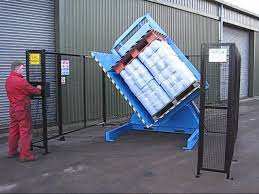
I know that as a leader, you're always looking at the bigger picture. An investment in equipment isn't just about solving one small problem. It's about how that solution impacts your entire operation, from your people to your bottom line. So, let's go beyond the basic idea of "making work easier." We'll explore how these systems specifically tackle manual strain, the real financial and operational returns you can expect, and how to choose the right solution for a demanding environment. This isn't just about a new machine; it's about a strategic upgrade to your process that pays dividends for years to come.
How does an automated pallet exchange system specifically address manual strain in logistics?
You see your teams working hard, lifting and moving heavy loads all day. You know it's tough work, and you've probably seen the impact—sore backs, fatigue, and even serious injuries that lead to lost workdays. This is a constant worry for any responsible factory owner. The manual process of swapping pallets is a primary source of this strain. Workers have to bend, lift, and twist repeatedly, handling dozens, if not hundreds, of items per pallet. The problem is clear, but how exactly does an automated solution fix it at its core? It seems like a complex machine, but its function is beautifully simple.
An automated pallet exchange system specifically addresses manual strain by completely taking over the physical task of transferring a load. It uses powerful and precise mechanics to grip the entire palletized load, whether it's sacks of coffee or boxes of fruit. Then, it gently tilts or inverts the load, allowing the original pallet to be removed from the top. A new pallet is then put in place, and the machine returns the load to its upright position. The entire cycle happens without a single box being lifted by hand. This eliminates the repetitive, strenuous motions that cause musculoskeletal injuries.
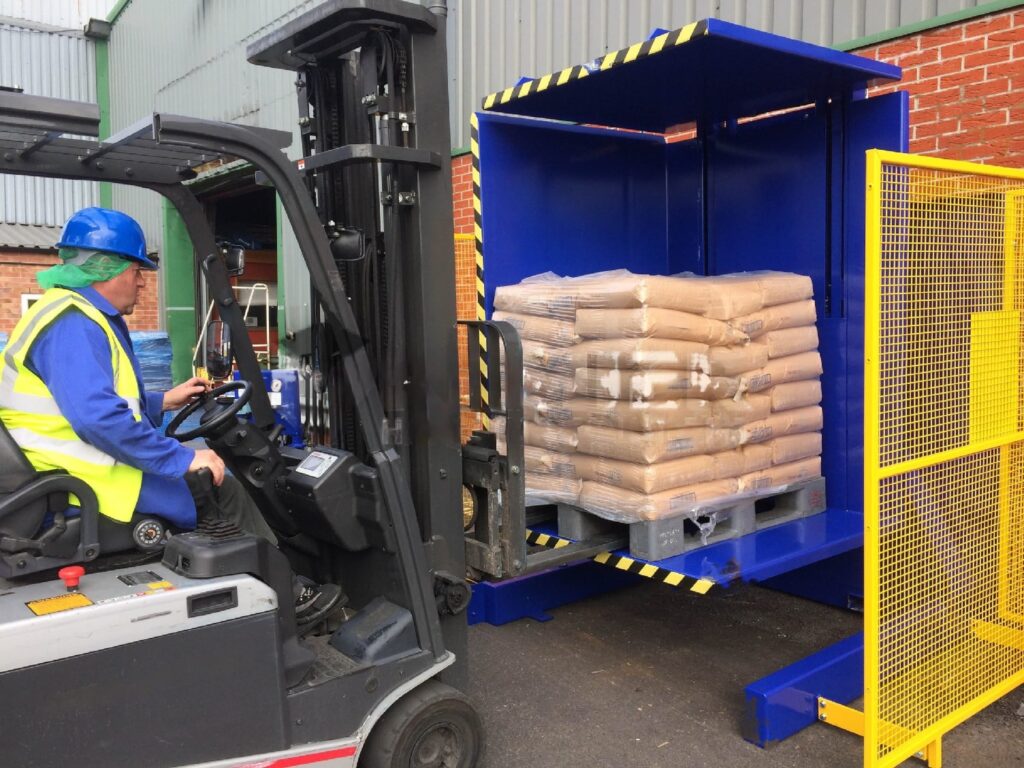
A Mechanical Solution to a Human Problem
When I was first designing packaging systems, I learned a valuable lesson: the best machines mimic and perfect human actions. The manual process of pallet exchange is inefficient and dangerous because the human body is not designed for that kind of repetitive, heavy lifting. An automated pallet exchanger, however, is built for exactly that. Let's break down the mechanics versus the manual method.
The core of the system is its ability to secure the load. It uses pressure-sensitive clamps that adjust to the product, holding it firmly but gently. This is crucial for products like Colombian coffee beans in sacks, which can shift, or ripe fruits, which can bruise easily. Once secured, the machine performs the rotation.
- 180-Degree Inverters: These are the most common type. They literally turn the load completely upside down. The original pallet is now on top and can be easily lifted off.
- 90-Degree Tippers: These systems, often called pallet changers, tilt the load to a 90-degree angle. The load rests securely against a side wall while the pallet is swapped out at the base. This can be gentler for very unstable loads.
The contrast with the manual method is stark. A single worker, or even a team of two, must de-stack the entire pallet, piece by piece. They place the items on the floor or a new pallet, then restack them. This process is not only slow but introduces multiple points of failure.
Comparing the Processes
Let's look at a direct comparison to understand the impact.
| Metric | Manual Pallet Exchange | Automated Pallet Exchange |
|---|---|---|
| Time per Pallet | 15 - 30 minutes | 1 - 2 minutes |
| Personnel Required | 2 - 3 workers | 1 operator (often part-time) |
| Risk of Injury | High (back, shoulder, repetitive strain) | Near-zero |
| Risk of Product Damage | Moderate to High (dropping, crushing) | Very Low |
| Process Consistency | Low (depends on worker speed/fatigue) | High (machine operates at a set speed) |
As you can see, the machine doesn't just reduce strain; it transforms the entire task. It turns a variable, high-risk, labor-intensive process into a predictable, safe, and efficient one. For a high-volume operation like fruit or coffee exporting in Colombia, this consistency is key to meeting tight shipping schedules and quality standards.
What are the financial and operational benefits of pallet exchangers beyond ergonomics?
Improving worker safety is a huge win, and it's often the main reason people start looking into automation. But as a business owner, I know you have to answer to the balance sheet. Every major investment needs to show a clear Return on Investment (ROI). You might be thinking, "Okay, my team is safer, which is great. But how does this machine actually make my business more money or save costs?" The reality is, the ergonomic benefits are just the tip of the iceberg. The true value lies in the cascading financial and operational improvements that ripple through your facility.
The financial and operational benefits of a pallet exchanger extend far beyond simple ergonomics. They create tangible cost savings and efficiency gains. You'll see a direct reduction in labor costs, as a task that required multiple workers can now be handled by a single operator. Productivity skyrockets because a process that took 20 minutes now takes two. This means more pallets can be processed per hour, increasing your overall throughput. Furthermore, you reduce the significant hidden costs associated with workplace injuries, such as higher insurance premiums, worker compensation claims, and lost productivity from absent employees.
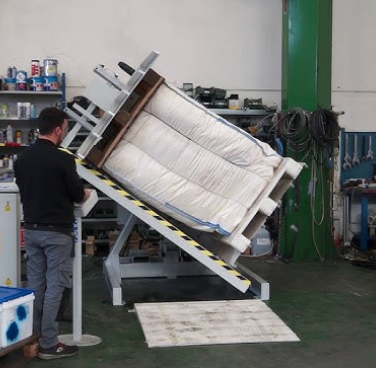
Unlocking a Stronger Bottom Line
From my experience helping clients analyze their operations, the financial case for this type of automation is compelling. Let's dig deeper into the specific areas where you'll see a positive impact.
Direct Cost Reductions
This is the easiest benefit to quantify.
- Labor Savings: You are directly re-assigning labor. If two workers earning a certain wage were spending half their day swapping pallets, that labor cost is now free to be used for more value-added tasks.
- Reduced Product Damage: In manual handling, products get dropped, crushed, or contaminated. For high-value goods like specialty coffee or export-quality fruit from Colombia, even a 1% reduction in spoilage can mean thousands of dollars saved annually. The machine handles entire loads with consistent pressure, dramatically cutting down on these losses.
- Lower Insurance & Compensation Costs: Workplace injuries are expensive. There are direct costs from medical bills and compensation claims, and indirect costs from managing the claim and hiring temporary replacements. A safer workplace leads to fewer claims and, over time, can lower your insurance premiums.
Operational Efficiency Gains
These benefits boost your capacity and revenue potential.
- Increased Throughput: This is a simple math problem. If you can process a pallet 10 times faster, you can ship 10 times more product in the same amount of time. This removes a major bottleneck in your shipping or receiving docks.
- Improved Pallet Management: Many operations need to switch from in-house wooden pallets to plastic or shipping pallets (or vice versa). An automated exchanger makes this a seamless part of your workflow, not a time-consuming special project. It also allows you to easily retrieve and reuse your high-quality internal pallets, saving on pallet purchasing costs.
A Sample ROI Calculation
Let's put some hypothetical numbers to this. This is a simplified model, but it shows how quickly the investment can pay for itself.
| Cost/Saving Category | Manual Process (Annual Cost) | With Pallet Exchanger (Annual Cost/Saving) |
|---|---|---|
| Labor Cost (2 workers, part-time) | $25,000 | $5,000 (1 operator, less time) -> $20,000 Saving |
| Product Damage (1% of $2M value) | $20,000 | $2,000 (0.1% damage) -> $18,000 Saving |
| Injury-Related Costs (avg. 1 claim/yr) | $5,000 | $0 -> $5,000 Saving |
| Total Annual Savings | $43,000 |
If the machine costs, for example, $60,000, the payback period is less than 1.5 years. For a piece of equipment with a lifespan of 15-20 years, that is an exceptional return.
How do you choose the right pallet exchange solution for a demanding environment like Colombia's?
Once you've seen the potential benefits, the next logical question is, "Which one is right for me?" Walking into the world of industrial machinery can be overwhelming. There are different models, different features, and different price points. A machine that works perfectly for a pharmaceutical cleanroom might be completely wrong for a rugged, high-volume fruit packing facility. In a place like Colombia, with its specific logistical needs for coffee and fruit, choosing correctly is even more important. You need a machine that is not only effective but also durable, reliable, and suited to your unique products and workflow.
Choosing the right pallet exchange solution involves a careful analysis of your specific operational needs. You must first consider the load characteristics: its weight, dimensions, and stability. Sacks of coffee behave differently than boxes of bananas. Second, evaluate your required throughput. How many pallets do you need to process per hour? This will determine the necessary level of automation. Third, assess your facility's layout and available space. Finally, you need a partner, not just a supplier, who can understand these factors and recommend or even customize a machine that provides the best long-term value and reliability for your demanding environment.
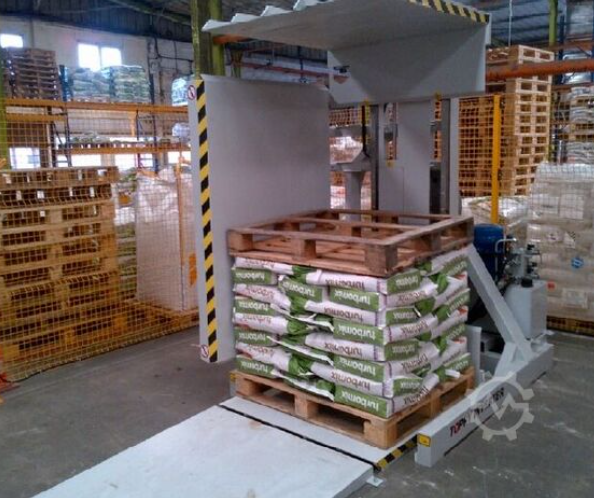
A Practical Checklist for Decision-Making
I've always approached equipment selection as an engineer. You start with the requirements and work your way to the solution. It's not about finding the cheapest or the most advanced machine; it's about finding the appropriate machine. Here are the key factors I advise my clients to consider.
1. Analyze Your Load
This is the most critical step. The product dictates the machine.
- Weight & Size: What is your maximum pallet weight and dimensions (L x W x H)? The machine must be rated to handle your heaviest and largest loads safely.
- Product Type & Stability: Are you handling robust sacks of green coffee beans, or delicate, easily bruised mangoes? Sacks can be clamped firmly. Fragile boxes may require a gentler 90-degree tipper to avoid shifting and damage. A machine with adjustable clamping pressure is often a wise investment.
- Packaging: Are the goods in boxes, bags, drums, or are they unwrapped? Stretch-wrapped pallets are generally more stable and easier to handle.
2. Define Your Operational Needs
How will the machine fit into your daily workflow?
- Throughput (Pallets per Hour): A stand-alone, operator-loaded machine might handle 15-20 pallets per hour, which is perfect for many facilities. However, if you have a massive operation, you might need a fully automated in-line system that can handle 50+ pallets per hour with no operator intervention.
- Loading Method: How will you get pallets into the machine? Most common is by forklift or pallet jack. You need to ensure the machine's loading bay is compatible with your existing equipment.
- Facility Space: These are not small machines. You need to have detailed measurements of the installation area, including height clearances, to ensure a proper fit.
3. Evaluate Machine and Supplier Quality
The machine is a long-term asset.
- Construction: Look for heavy-duty steel construction. In the humid environments often found in Colombian packing houses, corrosion resistance is also a key factor. Look for quality paint or stainless steel options for critical components.
- Safety Features: Modern machines should come with safety light curtains, physical guarding, and emergency-stop systems as standard. Never compromise on safety.
- Supplier Support: This is where a partnership becomes important. Does the supplier offer installation support, operator training, and readily available spare parts? A cheap machine with no support can become a very expensive problem down the line.
Here's a simplified table to help guide your thinking:
| Consideration | Key Question | Why It Matters |
|---|---|---|
| Load Capacity | What is my heaviest pallet? | Safety and machine longevity. Overloading is a primary cause of failure. |
| Load Stability | Are my goods fragile or unstable? | Determines machine type (Inverter vs. Tipper) and prevents product damage. |
| Required Speed | How many pallets per hour? | Matches the machine's automation level to your operational tempo. |
| Footprint | Do I have enough space? | Ensures the machine will physically fit and can be operated safely. |
| Build Quality | Is it built to last in my environment? | Guarantees reliability and a lower total cost of ownership. |
Choosing the right machine is a methodical process. By carefully thinking through these points, you can select a solution that will be a reliable and profitable part of your operation for many years.
What is the long-term strategic value of this automation for a growing business?
As a business owner who has grown a company from the ground up, I can tell you that the best decisions are the ones that pay off in the long run. It's easy to get focused on solving today's problems. But true success comes from making investments that position your company for future growth. So, while an automated pallet exchanger can immediately solve issues with manual strain and bottlenecks, what is its strategic value? How does a single piece of equipment fit into the five or ten-year plan for your business? A growing company, especially in a competitive global market like coffee or fruit, needs to be agile, scalable, and resilient.
The long-term strategic value of automating pallet exchange lies in its ability to build a more scalable, resilient, and data-driven logistics operation. This automation is not just a one-time fix; it is a foundational step towards modernizing your entire facility. It creates a process that is no longer dependent on the physical limitations of manual labor, allowing you to easily scale your throughput to meet growing demand. It also standardizes a key handling process, which is the first step towards better data collection, integration with management systems like MES, and building a smarter, more predictable supply chain.
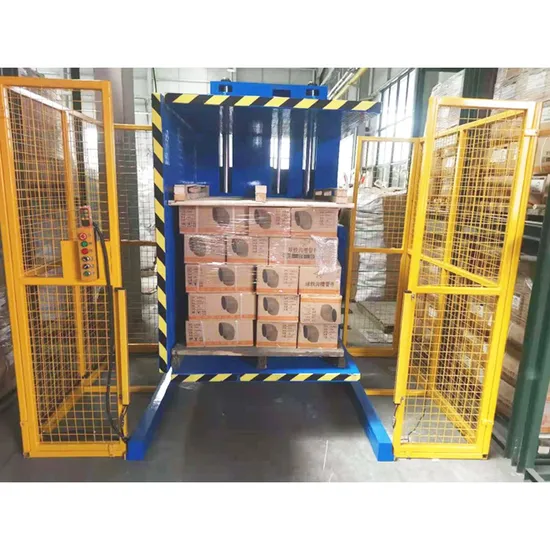
Building a Foundation for Future Growth
Let's look beyond the immediate ROI and consider how this investment makes your entire business stronger for the future. This is the kind of thinking that separates market leaders from everyone else.
1. Scalability on Demand
Imagine a sudden surge in orders. With a manual process, your only options are to ask your team to work faster and longer—which increases fatigue and risk—or to quickly hire and train new people, which is costly and time-consuming. An automated system doesn't get tired. Its capacity is fixed and predictable. If you need to increase output, you can run an extra shift without a proportional increase in labor or a decrease in safety. This allows your business to be more agile and responsive to market opportunities, a crucial advantage in the volatile commodities market.
2. Future-Proofing and Digitalization
You mentioned a goal of deploying MES and IoT platforms. This is where strategic automation becomes critical. A manual process is a "black box." You don't know exactly how long it takes or why delays happen. An automated system is different. It's a machine with predictable cycles and clear inputs and outputs.
- Data Integration: Modern pallet exchangers can be equipped with sensors and connected to your network. They can report data on how many pallets were processed, cycle times, and any operational faults.
- Connecting to MES/WMS: This data can feed directly into your Manufacturing Execution System (MES) or Warehouse Management System (WMS). Now, your managers have a real-time, accurate view of what's happening on the shipping dock. This is a building block for the kind of comprehensive production visualization you aim to achieve.
3. Enhancing Your Brand and Market Position
In today's market, customers and partners care about how you do business.
- Employee Welfare: Being known as an employer who invests in the safety and well-being of your team is a powerful tool for attracting and retaining the best talent.
- Quality and Compliance: For exporting to demanding markets in Europe or North America, demonstrating a modern, controlled, and hygienic process can be a significant advantage. An automated system reduces contamination risk from manual handling and shows a commitment to global standards.
This kind of automation is more than just a piece of steel. It's an enabling technology. It's a strategic investment that reduces risk, creates capacity, and provides the data foundation needed to build a truly modern and competitive operation.
My Insights
Javier, I know your world is steel, not coffee. You manage a 2-million-ton integrated steel plant in Mexico, and your challenges are on a massive scale. You're dealing with the immense heat of blast furnaces, the power of rolling mills, and the weight of steel coils, not sacks of fruit.
But I wanted to share this story about Colombian logistics for a very specific reason. The core principle is exactly the same. The problem of manual strain doesn't go away when the product gets heavier; it becomes exponentially more dangerous and costly. Your team members who have to manually handle, rig, or guide heavy materials face enormous risks. A single mistake doesn't lead to a bruised apple; it can lead to a catastrophic failure.
You are focused on big goals: improving capacity utilization to 95%, reducing energy consumption, and driving down operational costs by 8%. These are the right goals for a leader in a capital-intensive industry. Targeted automation is one of the most powerful tools to help you get there. The pallet exchanger is just one example. Think about the specific, repetitive, high-risk manual tasks in your own plant.
- Where are you using manual labor to tilt or rotate heavy coils? A custom coil upender could do that in seconds, safely.
- Where are your bottlenecks in the final packing and shipping stages? Automated wrapping and strapping lines can dramatically increase throughput and consistency.
- Where are you losing time and creating risk moving materials between production lines?
You are looking for a strategic partner, not just a supplier. I built my business on that exact philosophy. My goal is to understand your unique operational challenges—the aging equipment, the pressure on costs, the need for digitalization—and apply my engineering experience to find a solution that delivers a clear, undeniable return on investment. The conversation isn't about selling you a machine; it's about solving your problem. Whether it's in a Colombian fruit facility or a Mexican steel mill, the goal is the same: use smart engineering to make the operation safer, faster, and more profitable. That is the work I am passionate about.
Conclusion
Automating pallet exchange is a strategic investment. It directly cuts manual strain, boosts operational efficiency, and delivers a strong, quantifiable return, making your business more scalable and competitive for the future.



